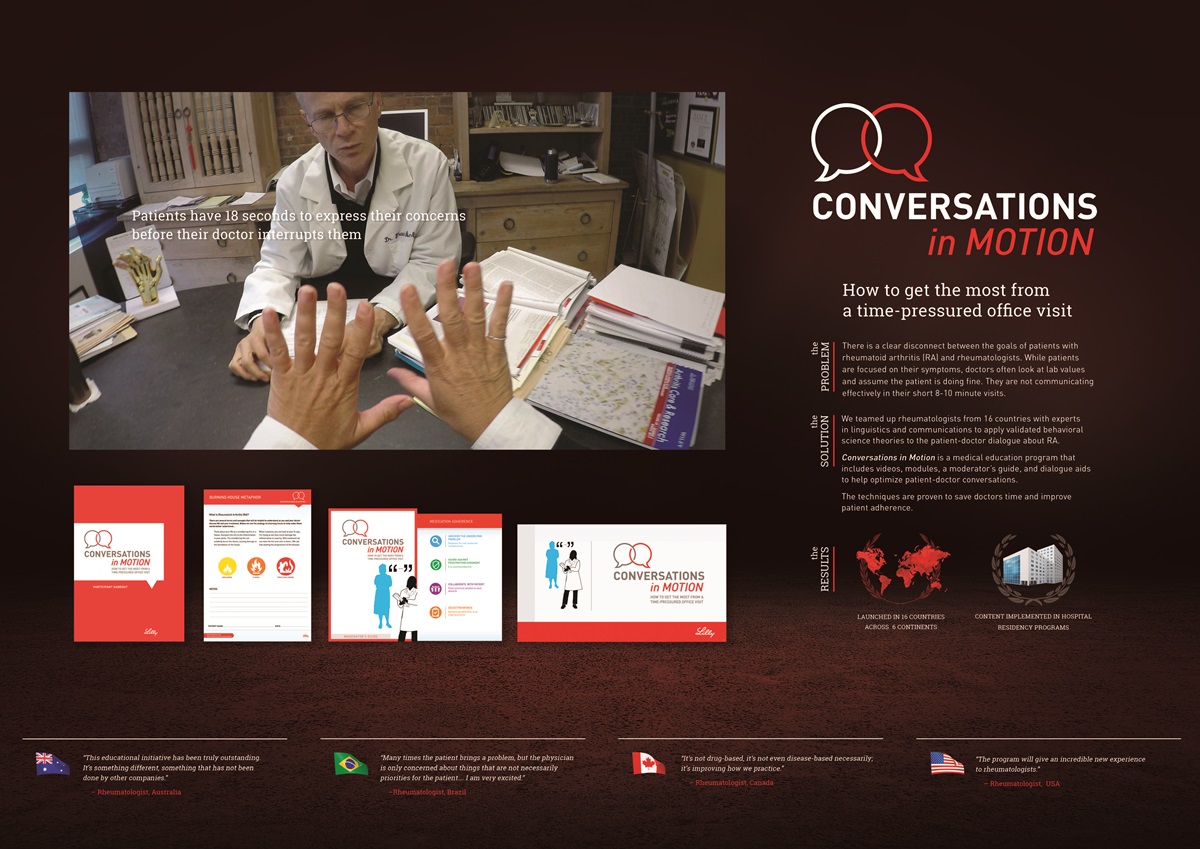Project Description
Rheumatoid Arthritis is severely disabling. Even patients with mild disease need 2-3 hours to get ready in the morning due to joint stiffness. It has a severe impact and causes extreme pain and fatigue. Patients struggle with everyday life: activities, getting dressed, working. Their focus is today.
Doctors focus on tomorrow. They know RA is a lifetime disease and want to ensure it doesn’t progress; and want patients to avoid having deformed limbs. Doctors also face increasing pressures from healthcare systems: the need to see more patients, the average visit is getting shorter, and they only see patients every few months. They look at lab values, see that the patient responds, and assume everything is fine.
Research with thousands of patients and hundreds of rheumatologists showed that this disconnect is a critical issue, with impact on all aspects of the disease, including compliance, day-day life, therapeutic success and long term outcomes. We developed a program to address this
Agency Solution
This program was designed with rheumatologists, linguists and communications specialists globally to teach rheumatologists how to optimize conversations with patients. These teaching have been validated in social theory research and can be incorporated without adding time to the consultation. In fact, applying them saves time and positively impacts treatment outcomes.
Conversations in Motion includes everything needed to teach/learn the program:
• 4 slide modules, each reviewing 3-4 communications techniques. We applied adult learning principles to the design, ensuring that the content is simple, visual, easy to understand, and relevant to all geographies.
• Role-playing scenarios to practice techniques and videos demonstrating correct and incorrect ways to address specific patient concerns.
• Moderators’ guide showing how to use the materials and teach the curriculum easily.





